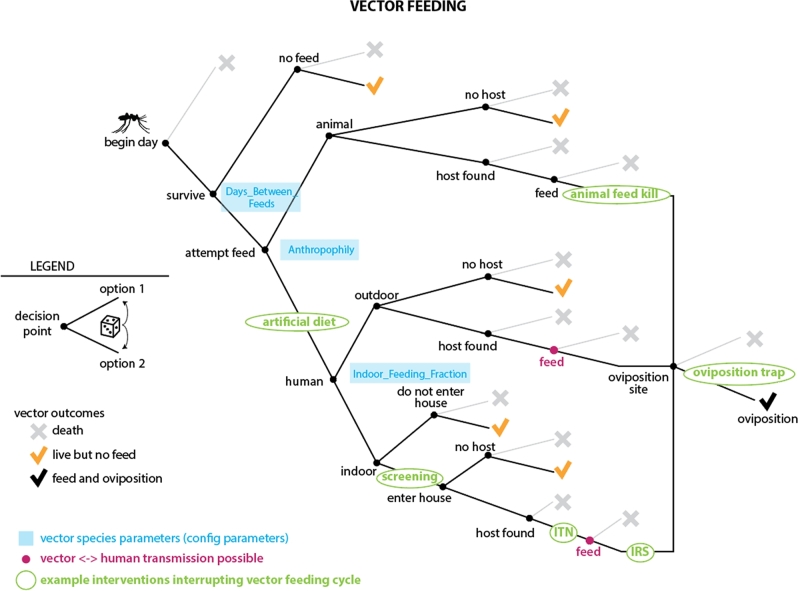Figure 2.
To illustrate how systems can have multiple points of interaction with interventions, this diagram shows a decision tree representing possible outcomes for an insect vector such as a mosquito in the EMOD vector model. This branching tree of conditional probabilities is used to determine the proportion of vectors that die, survive, feed and reproduce each day. Multiple simultaneous interventions can target various branches in the vector feeding tree, and the deterrent and toxic effects of multiple interventions can be represented simultaneously. For example, both indoor residual spraying (IRS) and insecticide-treated nets (ITN) can be applied against indoor host-seeking mosquitoes. IRS can discourage mosquitoes from entering the house and also kill mosquitoes before feeding. The fraction of mosquitoes that survive can be blocked by the ITN, which may also kill a subset of the blocked fraction. Those mosquitoes who survive the feeding attempt may be killed by IRS post-feed. Vector behavior parameters (blue) can be configured independently for each vector species being modeled, and the interventions (green) can be configured with multiple parameters such as the distributions of their blocking and killing abilities, duration of effect, duration of use and cost.

